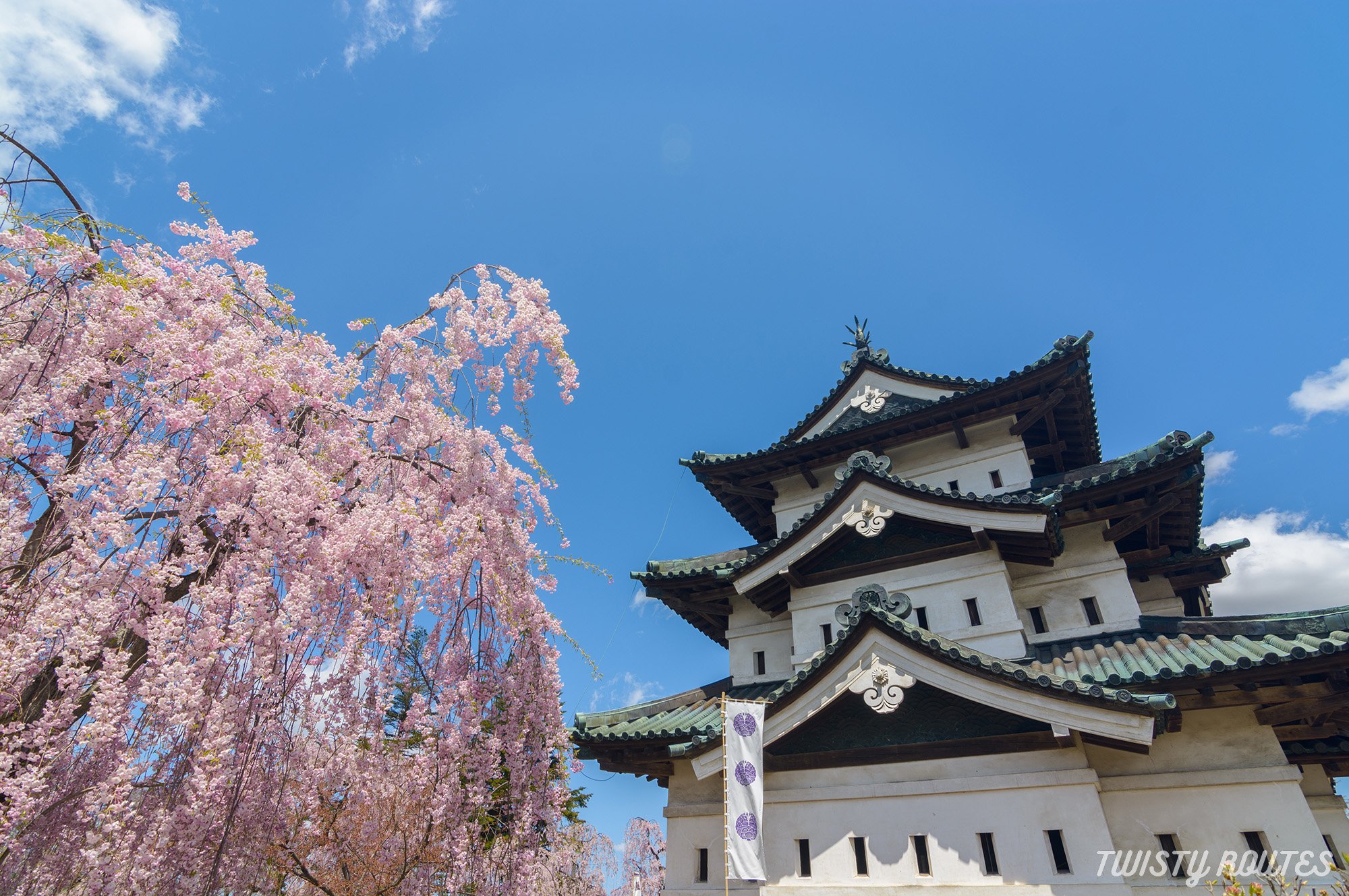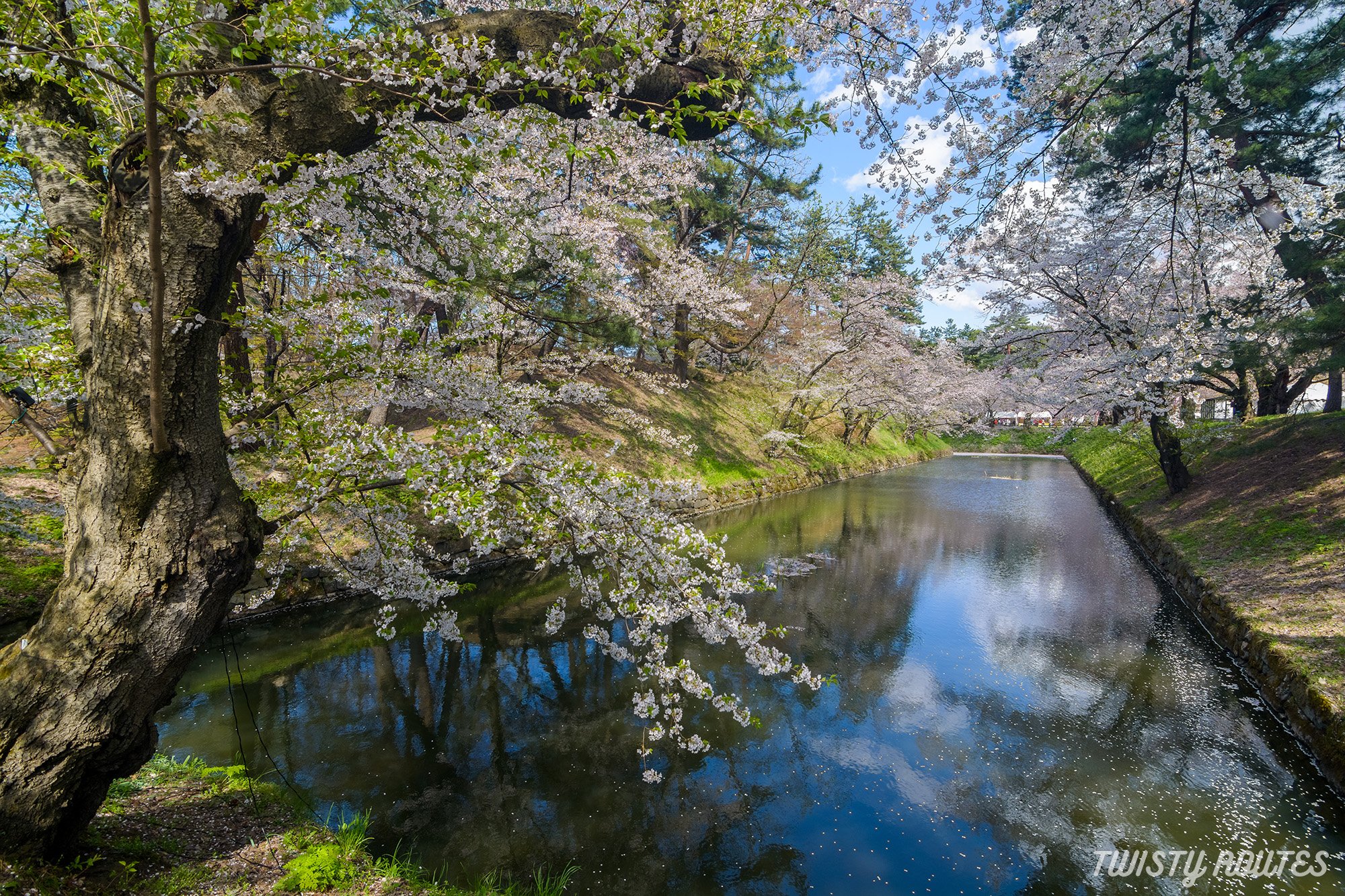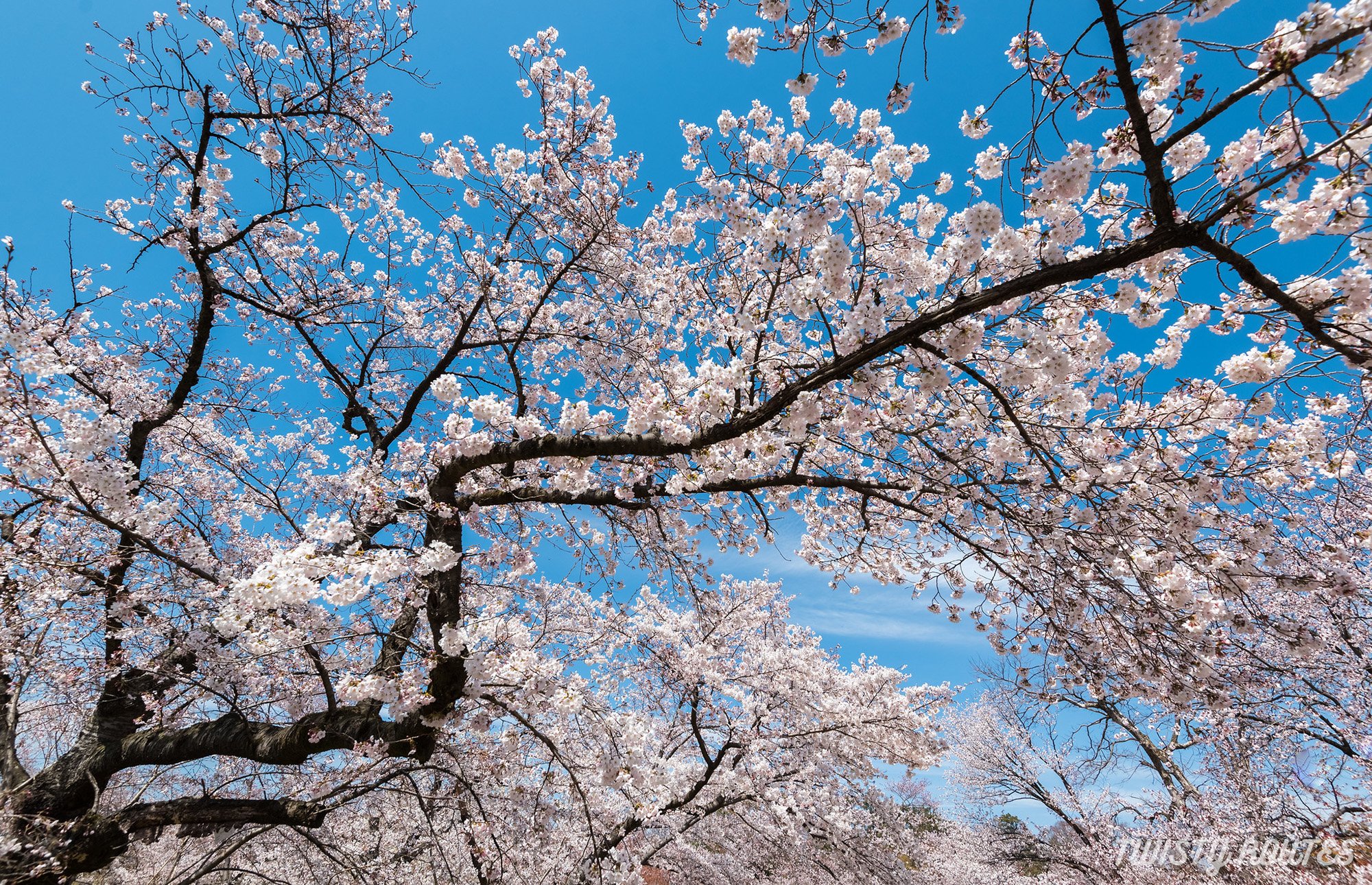Hirosaki Park and Castle - Cherry Blossom festival
Catching the glimpse of Cherry Blossom trees (SAKURA) in Japan is tricky, as the cherry blossom season is relatively short. The largest factor in determining the timing of the cherry blossoms is the geographical location. The milder the climate, the earlier the blossoms open. They start blooming as early as February and as late as May in different regions within Japan. Starting with Okinawa in the south, and traveling up north to Hokkaido.
This time we planned to explore the Cherry blossoms in the northern side of Japan, around the Tohoku region, and visited one of the beautiful spots in Aomori prefecture - Hirosaki park.
Hirosaki Park is home to 2600 trees including over 50 different types of cherry trees including somei yoshino, shidarezakura (weeping cherry), and yaezakura (double-layer cherry). This park is one of Japan's best cherry blossom viewing spots. This park is not only beautiful when these Sakura trees are in full bloom but is also known as 'the best place to see them after petals fall.' The park’s inner and outer moats are filled with these beautiful pink petals which many tourists flock to watch, (a moat is a wide ditch typically filled with water surrounding the fort, or castle area).
Pink Petals carpet at the outer moat area of Hirosaki Park
Best time to view Cherry Blossoms
As Hirosaki is located in northern Japan, the blooming of cherry trees happens around late April to early May. And the best time to see the pink petal carpet is from early to mid-May. There is also a cherry blossom festival “Hirosaki Sakura Matsuri (弘前さくらまつり)” which is held at Hirosaki Park every year. Before the pandemic, over 2 million visitors came to enjoy the sight of the castle and cherry blossoms in spring along with delicious food, fun events, and spectacular night light-up of trees.
Food and drink stalls at Hirosaki park
Must see trees and their location
Japan’s oldest Somei Yoshino cherry tree
Located between Yoriki Bansyo Guardhouse and Higashiuchimon gate. This tree is 9m tall and has a girth of 412cm.
Centenarian cherry trees tunnel
There are over 400 centenarian trees in the park and along the west moat area, there are 100 of them forming a cherry trees tunnel.
Japan’s thickest Somei Yoshino cherry tree
Located on the north side of Sannomaru, on the inner side of the Gardening information center. This tree is 10m tall and has a girth of 537cm.
Hirosaki Castle
Hirosaki Castle (弘前城, Hirosakijō) is a hirayama-style Japanese castle built-in 1611 by the Tsugaru Clan. The castle's original five-story keep was burnt down in 1627 after being struck by lightning. It was rebuilt in 1810, the present three-story keep is the only one in the Tohoku Region that was not rebuilt in the modern era, among only a handful in all of Japan.
Note: Renovation works on the castle's stone walls are carried out since 2013 for about ten years. So the castle’s keep was moved by about 70 meters to enable renovation works on its foundation and the surrounding stone walls.
Hirosaki Castle and Cherry Blossom trees during full peak
Mount Iwaki also known as Tsugaru Fuji
From the Hirosaki castle, you get a nice view of Mount Iwaki ("Iwakisan" in Japanese) is a mountain located about 15 km east-northeast of Hirosaki city. It is a volcano, the last eruption of the volcano was in 1863, and the volcanic activity is relatively inactive now. Due to its conical shape like Mount Fuji, so it is called "Tsugaru Fuji".
Mout Iwaki as seen from Hirosaki Castle
Pruning of Cherry Blossoms - unique technique
The cherry blossoms trees are unique as they were pruned by adapting the special pruning technique used on apples for over 130 years. Thus establishing the ‘Hirosaki style’ of pruning which invigorates the cherry tree. This revolutionary Hirosaki Style Pruning has received attention from all over Japan and abroad. This is now being used as a standard in Japan.
Getting There
From the Hirosaki station take the 100 yen Konan bus (Bankmachi Circulation Bus) and get off at the entrance of the park in front of the city hall. It takes about 15 mins from the station.
Walk for about 3 minutes on foot and arrive at Hirosaki Park Pursuit Gate. From here the Hirosaki castle is about an 8-10 mins walk
When returning from Hirosaki Park to Hirosaki Station, it is convenient to board from "Cultural Center Mae", which is a 4-minute walk from the East Gate.
Hirosaki Park Admission
Opening Hours
Honmaru/Kita no Kuruwa Area: 9:00a.m. - 5:00p.m. (April 1st - November 23rd)
Botanical Garden: 9:00a.m. - 6:00p.m. (Tickets are sold until 5:30p.m.)
During the Hirosaki Cherry Blossom Festival, the paid hours are extended.
Winter Closing - November 24th - March 31st
Please see the Hirosaki Park General Information Site for facilities and useful information about Hirosaki Park.
Phone 0172-33-8733
Official Website Hirosaki park - japan - sakura festival
Admission Fees
Honmaru/Kita no Kuruwa Area (Castle)
Adults ¥320 (¥250)
Children ¥100 (¥80)Botanical Garden
Adults ¥320 (¥250)
Children ¥100 (¥80)Combo Ticket (Honmaru/Kita no Kuruwa Area, Botanical Garden, Fujita Memorial Garden)
Adults: ¥520 (¥470)
Child ¥160 (¥130)
*Prices in ( ) are discounted prices for groups of 10 people or more.
Boat Rentals
Nishi-bori (West Moat) Boat Rental -self row
|
Opening hours 9am - 5pm |
Fees ¥1000 per boat |
Time 60 minutes |
Capacity 3 person (including child) |
Naka-bori (central Moat) Boat rental with staff
|
Opening hours 9am - 4:30pm |
Fees ¥1000 per person |
Time 20 minutes |
Capacity 20 person |
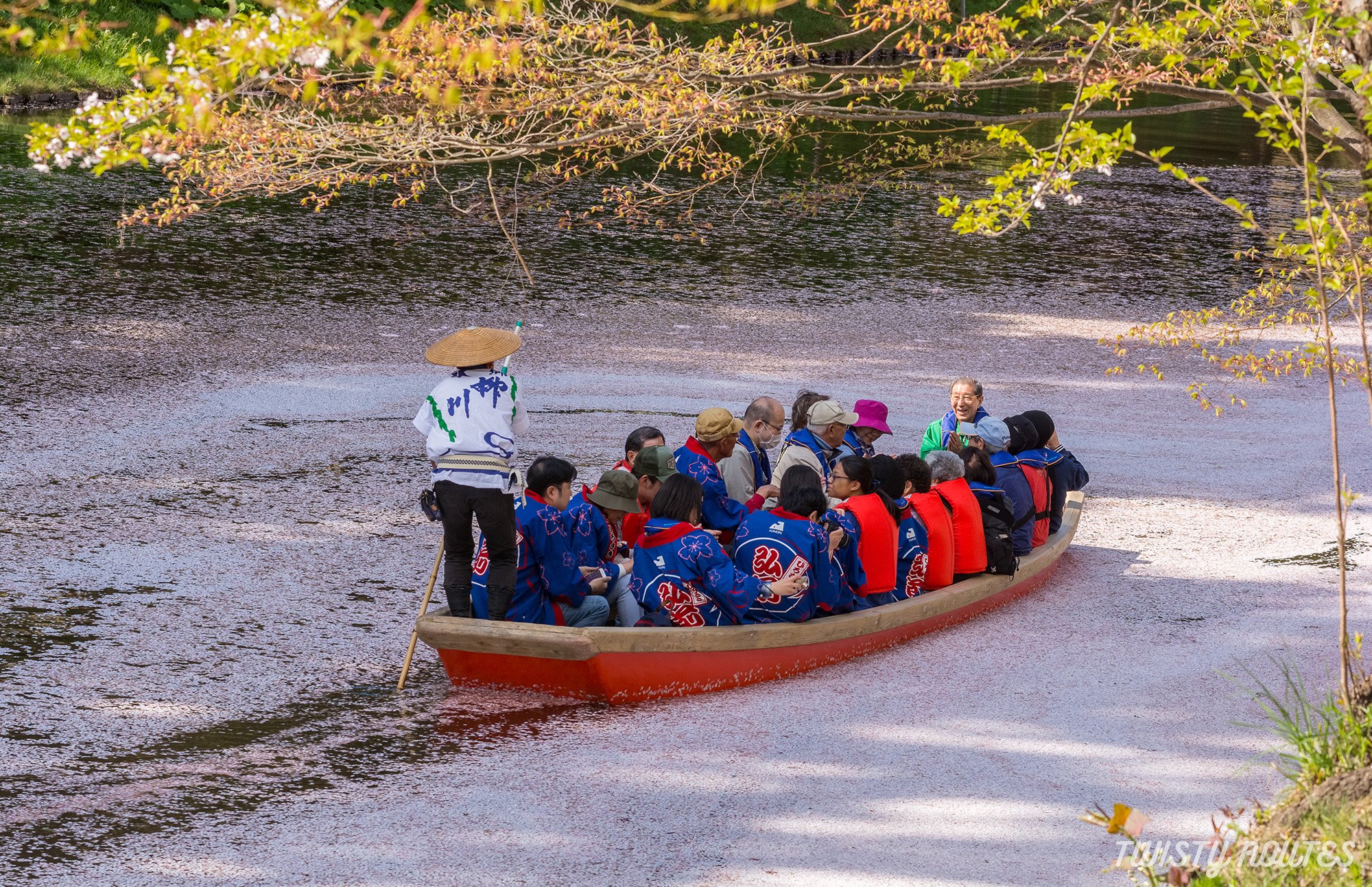
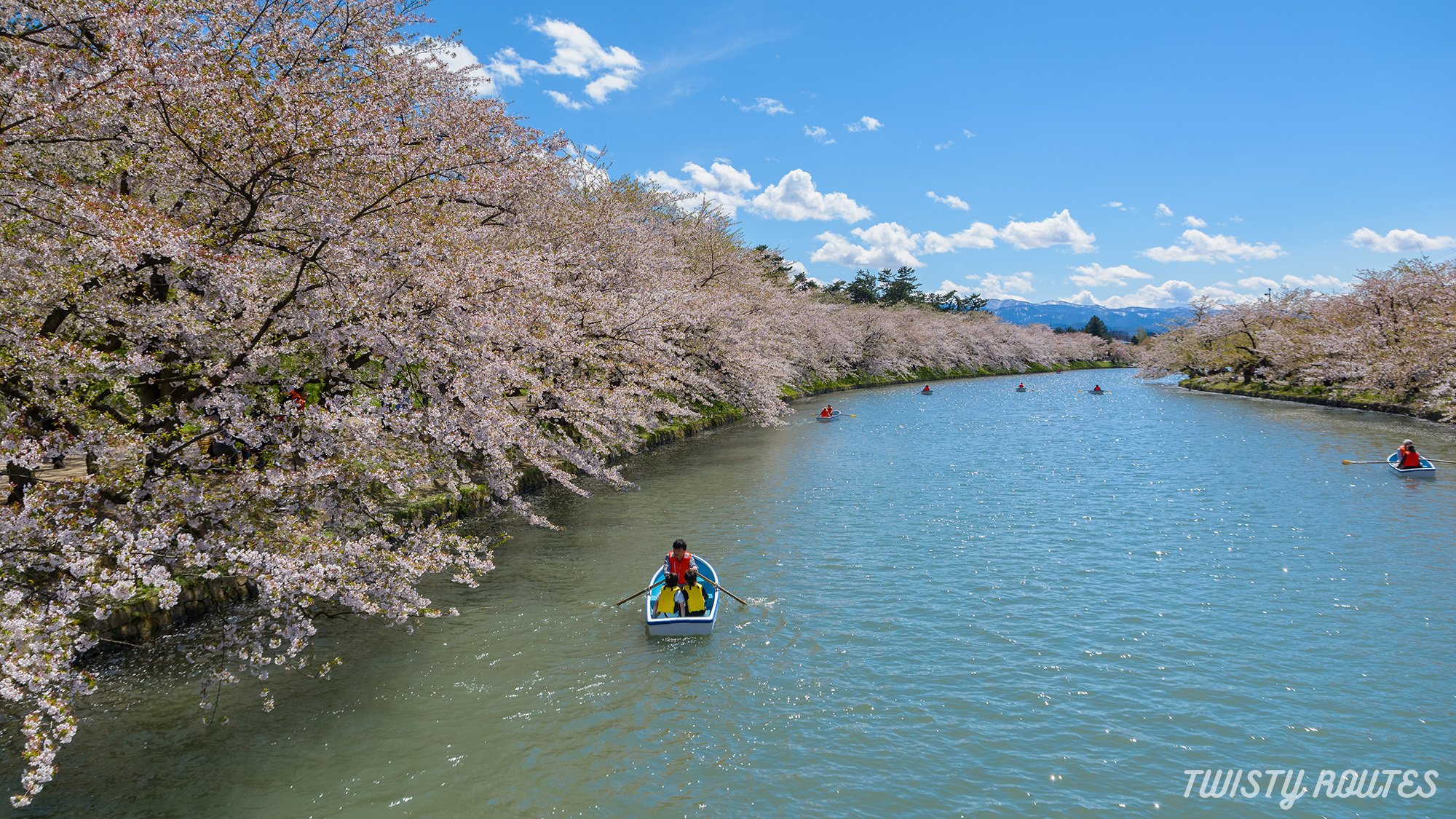

Night illumination
Fujita Memorial Garden
Fujita Memorial Japanese Garden was made in 1919 by a gardener from Tokyo. The spacious garden is separated into two main parts, an upper section, and a lower section. It is named after its first owner, a local businessman named Fujita Kenichi.
Lorem
References & useful links
Official website -Hirosaki park Sakura festival details. Use google translate for English.
Konan Bus - Bank Town Circulation 100 yen bus route and timings details
Photo Gallery
